| |
Tucson, Arizona is all about the heat in late spring and the summer. Actually, it is all about heat year round, one way or the other.
Snowbirds flock here during the winter months and like migratory waterfowl, they take flight back to their home states during mid and late spring through mid autumn. Many retirees live here year-round and become new locals. The lifetime locals know how to handle the heat, no matter the season. Warm winter and spring days are enticing for adventuring in and around The Old Pueblo, as Tucson is known. Late spring and summer days are great for adventuring, too, but your decisions on when and where to go are important.
When desert blooms are upon the land—like this year, the result of a wet winter—the arroyos, alluvial fans and desert mountains sing with color. The Old Pueblo is surrounded by mountain ranges—including 9,157 foot Mount Lemmon (which also has a small ski mountain) in the nearby Santa Catalina Mountains—offering endless explorations for the adventurous traveler. Summer temps often differ 25 degrees within 30 miles from Tucson to Mount Lemmon. When Tucson is like an oven, Mount Lemmon is like a pleasant and refreshing sorbet. The Old Pueblo itself has an inviting plate of activities, including art, music, world class museums, public gardens, Southwest cuisine and a plethora of other activities, regardless of the time of the day, though early mornings and evenings are preferred unless air conditioning is involved. |
|
| |
|
|
| |
 |
|
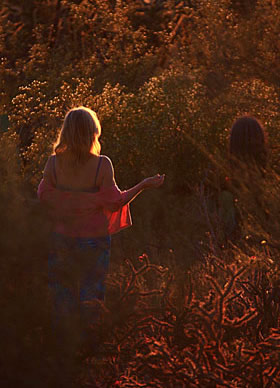 |
|
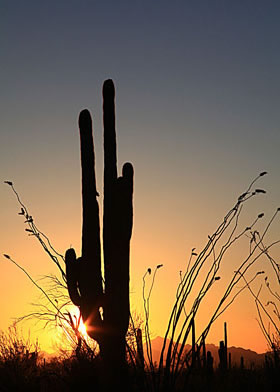 |
|
| |
Desert rattlesnake |
|
Gathering the light |
|
Sunset in the desert |
|
| |
|
|
|
|
|
|
| |
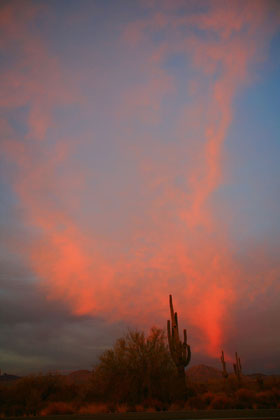 |
|
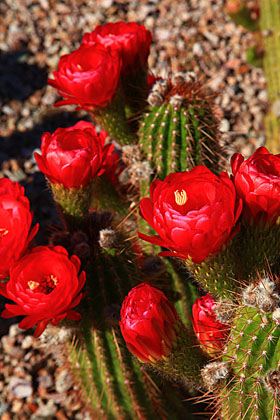 |
|
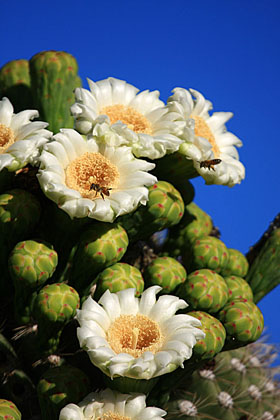 |
|
| |
Desert glow |
|
Spring blooms |
|
Saguaro blooms and bees |
|
| |
|
|
|
|
|
|
| |
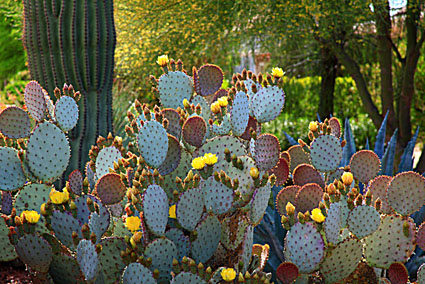 |
|
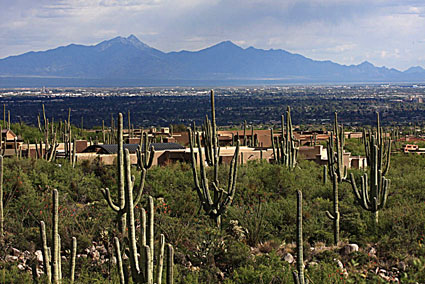 |
|
| |
Prickly pear in bloom |
|
Tucson, Arizona |
|
| |
|
|
|
|
| |
SPRING AND SUMMER |
|
| |
|
|
| |
The summer months in Tucson sees temperatures often in triple digits so in preparing your explorations, prepare accordingly. The crack of dawn is the best time to go out for outdoor activities such as hiking and biking. Later in the day when temps are sweltering, just before sunset, winds often come to moderate the desert leading into the evening but beware of the poisonous creatures that are upon the landscape, including rattlesnakes, gila monsters (the only poisonous lizard in Arizona), coral snakes and scorpions. On the morning of this writing, I came across a four foot plus rattler which was coiled in an indentation, level to the ground. It rose, hissed and rattled; startling me but it offered a rare photo opportunity. If bushwhacking in the Arizona Sonoran Desert, animal trails are excellent to follow along with washes. The monsoon season in Tucson occurs in August, so pay special attention to the weather whereas not to get caught in a wash, canyon or arroyo. Tucson is known for its dramatic monsoon season lightening storms. They are exciting to watch and photograph as long as you are in a safe location. |
|
| |
|
|
|
|
|
|
| |
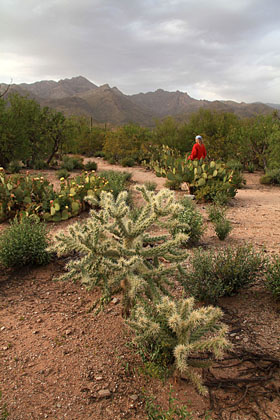 |
|
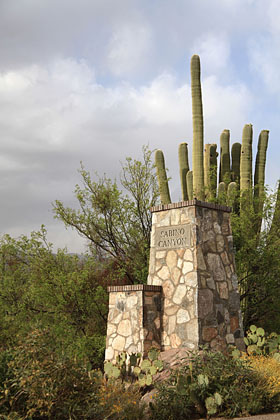 |
|
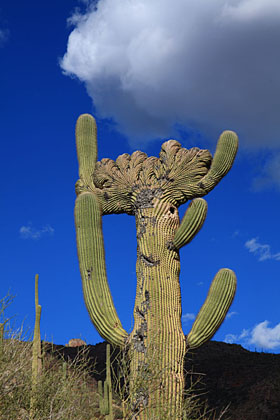 |
|
| |
Hiking Sabino Canyon |
|
Sabino Canyon |
|
Cristate cactus |
|
| |
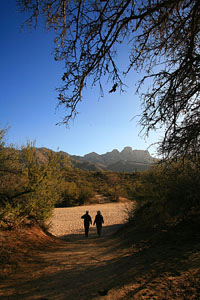 |
|
 |
|
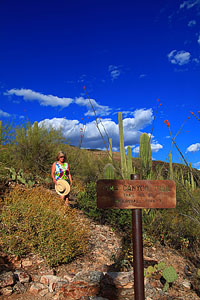 |
|
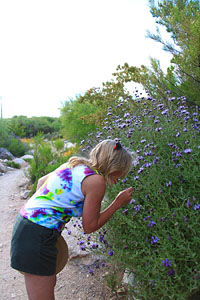 |
|
| |
Hiking Catalina State Park |
|
Catalina State Park |
|
Pima Canyon trail |
|
Desert blooms |
|
| |
|
|
|
|
|
|
|
|
| |
 |
|
 |
|
| |
Cardinal |
|
Roadrunner |
|
| |
|
|
|
|
| |
 |
|
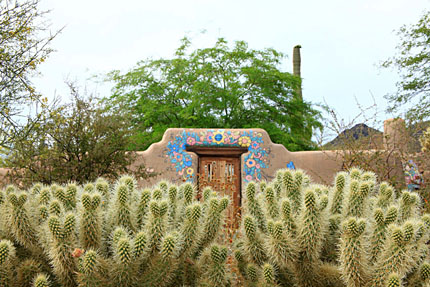 |
|
| |
Prickly pear sunset |
|
Cholla and entrance |
|
| |
|
|
|
|
| |
HIKING AROUND TUCSON: The Sonoran Desert |
|
| |
|
|
| |
There is a bounty of hiking trails in and around Tucson. My friend Lynette and I explored several, including Catalina State Park, Pima Trail, Sabino Canyon, Lemmon Trail and numerous trails in Saguaro National Park West. All of these are part of the Sonoran Desert, one of the four great deserts of the Americas (Great Basin, Mojave and Chihuahuan are the others). It is a brutal and beautiful landscape, home to the paloverde-saguaro plant communities and the natural residences of a variety of reptiles, birds and mammals.
Our Catalina State Park hike was with old (actually middle age) Minnesota friends Dave and Margaret Holste. They are long time travelers of the front and back roads of America and Canada. I had met them in Alaska in 1996. With his long-billed hat and swooping handlebar moustache, David looks like a combination of desert rat and an Alaskan fishing guru (a title he will gladly accept). Margaret is quick of wit and ready with laughter. We had a jolly good time at their mini-motor home site, slurping Minnesota Viking linebacker strong coffee and photographing cardinals and a roadrunner before hitting the trail. “This is a great state park,” says David. “Perfect for comfort, space and desert explorations. We hike and bike here every day, always finding something new to look at and experience. And the weather…well, let’s say, we know all about long Minnesota winters!” We hike with them for several miles, enjoying the saguaros, ocotillos, jumping cholla and a plethora of other desert plants and cactuses. The hike led us across washes and up into a canyon, all with spectacular views. I had the fortune of seeing a large javelina silhouetted against the setting sun. They can get a little ornery when they have their young and you spook them, so back away and give them plenty of room.
Our hike into Sabino Canyon was especially beautiful as a fresh spring rain had just fallen. The prickly pear cactus were in bloom and the saguaros just beginning—daisy like clusters of blooms on the tops of the saguaro, clustered like a multitude of bird nests. Sabino is like a desert Garden of Eden. In this oasis, twelve thousand years ago, mammoth lived here. The H’ohokam built irrigation dams in the creek, practicing early agriculture. Sabino Canyon Tours takes tourists into the canyon every day of the year (520-749-2861). Throughout the Canyon, there are hiking, biking, wheelchair accessible and picnic areas…along with plenty of adventuring off the beaten path.
The Pima Canyon hike is less known in Tucson and offers plenty of privacy along with great views of Tucson and the surrounding area. It can be accessed off Skyline Drive, a labyrinth of a road that is on Tucson’s northeast edge along the Santa Catalinas.
It was on this hike where I discovered and photographed my first cristate saguaro cactus…a fan shaped growth at the saguaros apex, resulting from genetic mutations. Saguaro blooms are at their height in June. This redwood of the cactus family grows up to 50 feet tall and can live for 200 years. Gila woodpeckers and flickers drill nest holes into the saguaro flesh and other birds, including hawks, make nests between the cactus branches. |
|
| |
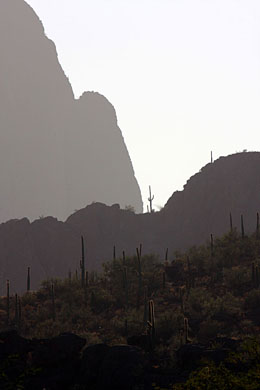 |
|
|
|
| |
Saguaro National Park West |
|
Saguaro National Park West |
|
| |
|
|
|
|
| |
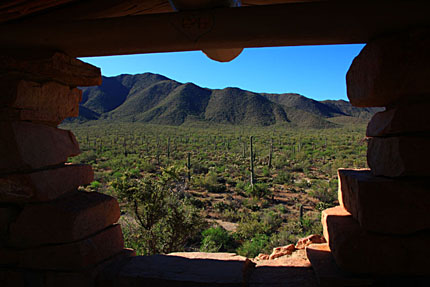 |
|
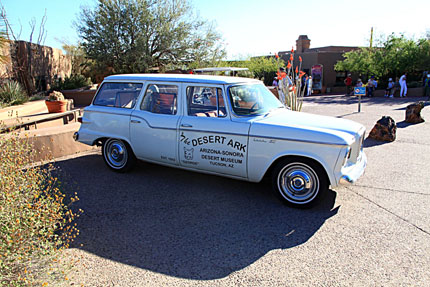 |
|
| |
Ez-Kim-In-Zen |
|
Desert ark |
|
| |
|
|
|
|
|
|
| |
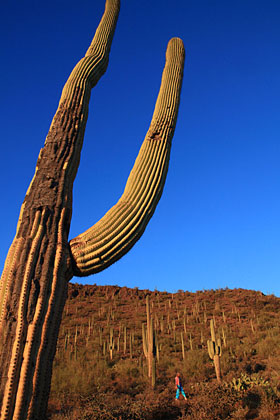 |
|
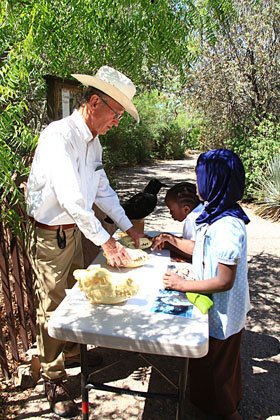 |
|
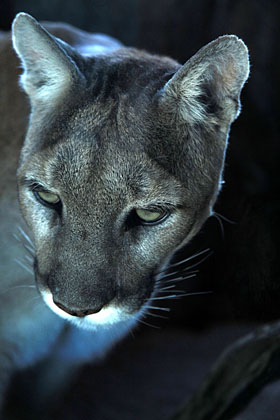 |
|
| |
Saguaro National Park |
|
Docent display |
|
Mountain lion |
|
| |
|
|
|
|
| |
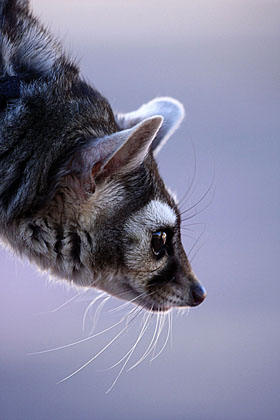 |
|
 |
|
| |
Coatimundi |
|
Barn owl |
|
| |
|
|
|
|
| |
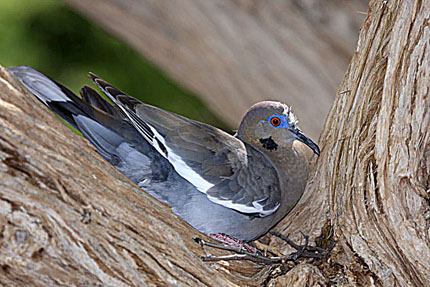 |
|
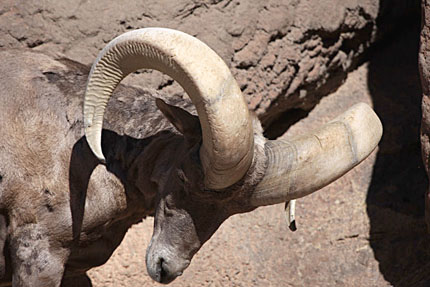 |
|
| |
Desert dove |
|
Desert bighorn sheep |
|
| |
|
|
|
|
| |
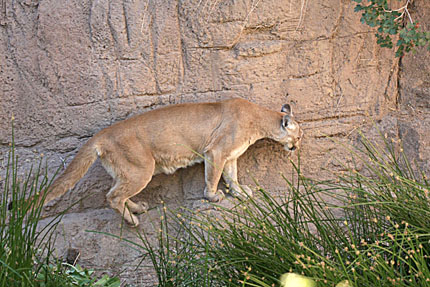 |
|
 |
|
| |
Arizona mountain lion |
|
Bobcat |
|
| |
|
|
|
|
| |
 |
|
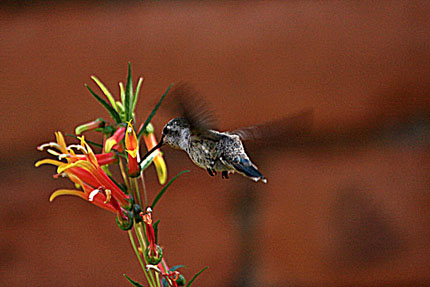 |
|
| |
Iguana |
|
Hummingbird aviary |
|
| |
SAGUARO NATIONAL PARK/ DESERT MUSEUM |
|
| |
|
|
| |
A person should be spanked with a cactus if they visit Tucson and do not go to Saguaro National Park and the Arizona-Sonoran Desert Museum. There is Saguaro NP West and East. I went to the West, less than 20 miles from downtown Tucson. The Park offers days of explorations. Since I’m not a snowbird, I had to pick and choose. One choice was a no-brainer: two days visiting the world class Museum which is home to just about every plant and critter that you’ll find in the Sonoran Desert. This remarkable place is tantalizing, educational and filled with exemplary exhibits, including great live demonstrations and docent tours. It is a place to literally get lost and found in. I especially enjoyed the aviary, the hummingbird aviary(there were five varieties and four nesting pairs when I was there), cat canyon, the earth sciences center and the desert loop trail. The museum has 300 animal species and 1200 kinds of plant displays on 21 acres. The Museum is open 7:30am to 5pm in the summer. The Museum also stays open to 10pm every Saturday during the summer. Be there at 7:30 am!
Nearby the Museum is the entrance to Saguaro NP West. Stop by the visitor’s center for information and take in one of their theater programs. There is a great interpretive hike near the center, too. Driving back to Tucson, one can take a combination of paved and dirt roads through the park. There are picnic areas along the way, too. My favorite is Ez-Kim-In-Zin, an isolated one off of Golden Gate Road and Encinas Road. Each picnic spot is sheltered and built with native rock. All of them have wonderful views. The Saguaro Wilderness is here, too, offering explorations for the more adventurous. Bring plenty of water, sunscreen, food, a pair of binoculars, a large white hat, a walking companion and a walking staff for these side trips. |
|
| |
|
|
|
|
|
|
| |
|
|
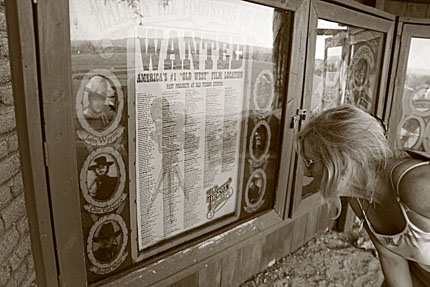 |
|
|
|
| |
|
|
Old Tucson movie stars poster |
|
|
|
| |
Near the Desert Museum is the famous Old Tucson Studios where many a memorable Western was filmed during the heyday of the Western as the silver screens top draw. The list of actors and actresses that have been filmed under the desert and studio lights here is endless. Ever heard of John Wayne, Dean Martin, Paul Newman? Tucson has been a home getaway for many stars. Clark Gable was a frequent guest of the Arizona Inn and he once paid a traffic fine at the Pima County Courthouse and ended up standing up as a witness for the wedding of Lyle Winney and Ginevera Linsley, two people he had never met until that day. Katherine Hepburn and Spencer Tracey often stayed at the Hacienda del Sol guest ranch in the 1940s. Their ‘room’ is still rented out. Lee Marvin, as did Linda McCartney, died in Tucson. Wayne would always stay at the Ramada Inn near Interstate 10 because he wanted to be where the cast and crew stayed. He considered himself one of them and he was always accessible to the average Joe.
When Lynette and I visited the Old Tucson Studio, it was late in the day, near sunset. We were the only people there. The gates were locked but we peered in. I could see the old western stages and props with a backdrop of the Tucson Mountains. The timing was fitting and perfect for me as I would rarely go to a place like that, connected to Hollywood. I’ve never been to Hollywood (Lynette’s birthplace), Disneyland, theme parks nor do I watch television (except on a rare occasion), yet I find it fascinating: the landscape of where films are made. ‘Must be the photographer in me. |
|
| |
|
|
| |
 |
|
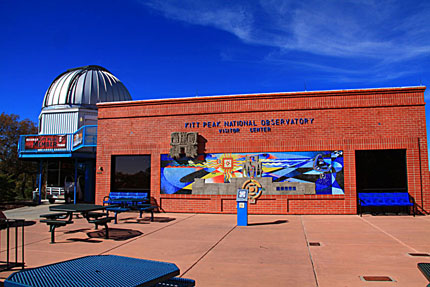 |
|
| |
Kitt Peak National Observatory |
|
Kitt Peak National Observatory Visitors Center |
|
| |
|
|
|
|
| |
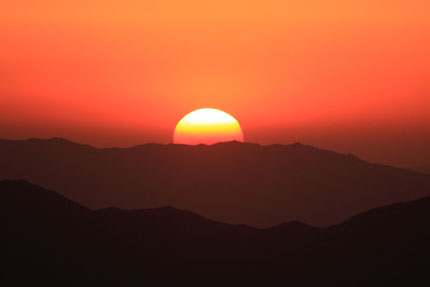 |
|
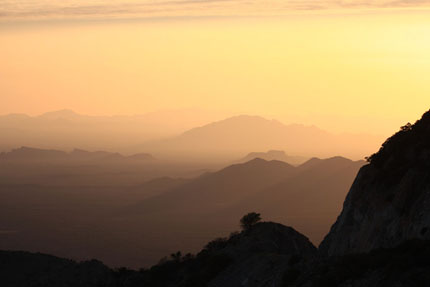 |
|
| |
Kitt Mountain sunset |
|
Late light Kitt Mountain |
|
| |
|
|
|
|
| |
KITT PEAK NATIONAL OBSERVATORY |
|
| |
|
|
| |
After my second visit to the Sonoran Museum, I left early enough for the 40-mile drive to Kitt Peak National Observatory, 56 miles south of Tucson. Kitt has the world’s largest collection of research telescopes. Located in the Tohono O’odham Nation, 25 optical telescopes and two radio telescopes allow scientists, researchers and amateur astronomers to peer into shallow and deep space. At 6875 feet, the curvy drive takes one from the hot valley floor to the cooler temps of this mountain orb, allowing one unparalleled night views and superb day vistas, too. There are guided tours throughout the day along with a night stargazing program (requiring reservations). Same day reservations can be made until 3pm if there are openings. There is an overnight observing program which I’ve placed on my bucket list for the future. I arrived too late to get a reservation but I had the pleasure of a slow drive off the mountain, including several stops documenting the last passages of the day’s light, highlighted by an ethereal sunset. On June 20 this year, Kitt has a special program called Sun-Day on Saturday, devoted solely to learning about the sun, including touring the world’s largest solar telescope. |
|
| |
|
|
|
|
|
|
| |
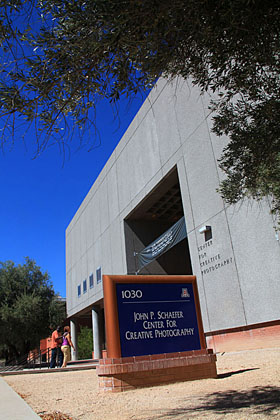 |
|
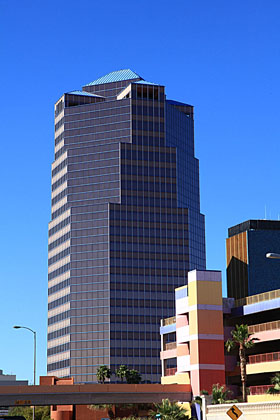 |
|
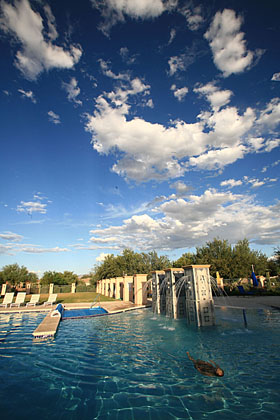 |
|
| |
Center for Creative Photography |
|
Downtown Tucson |
|
Casual Tucson afternoon |
|
| |
|
|
|
|
|
|
| |
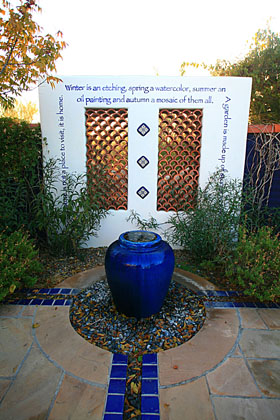 |
|
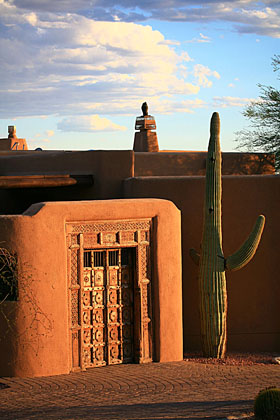 |
|
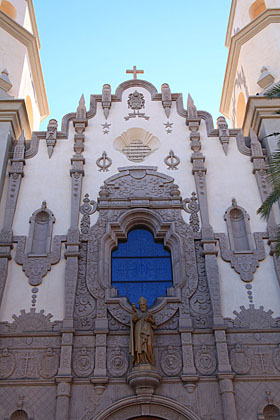 |
|
| |
Tucson garden |
|
Tucson residence entrance |
|
Downtown Tucson church |
|
| |
|
|
|
|
|
|
| |
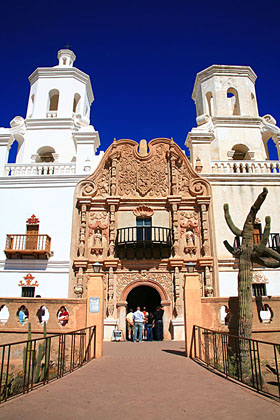 |
|
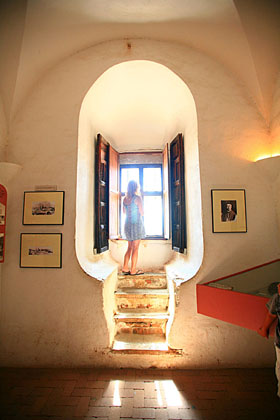 |
|
 |
|
| |
San Xavier Mission |
|
San Xavier Mission portal |
|
San Xavier Mission courtyard |
|
| |
|
|
| |
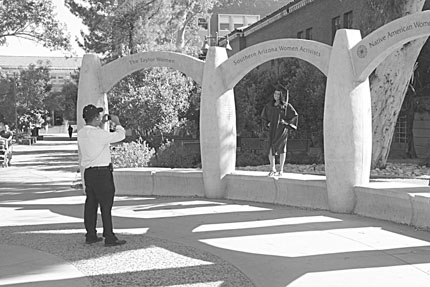 |
|
| |
University of Arizona graduation |
|
| |
OTHER TUCSON ADVENTURES |
|
| |
|
|
| |
Though I didn’t have a chance to go, Biosphere 2 is 20 minutes north of Tucson. Time Life Books has called it one of the 50 must-see wonders of the world: the world’s largest living science center. That’s intriguing enough to place it on the list for another time. However, I did go to the University of Arizona to visit a former high school classmate, Joy Winzerling PhD and department head of nutritional sciences and research. While on campus, I slipped over to the Center for Creative Photography, the depository of negatives/transparencies for some of the world’s greatest photographers, including Eugene Smith and Ansel Adams (a co-founder of the Center). An entire day can easily be spent perusing the complete achieves of these and other master photographers. Prior arrangements have to be made, though, at www.creativephotography.org. The Arizona State Museum is also on the campus grounds. Other notable places to visit while in Tucson are the Pima Air and Space Museum, the Tucson Museum of Art and Tucson’s Botanical Gardens (www.tucsanbotanical.org ), the International Wildlife Museum and the Mission San Xavier del Bac (www.sanxaviermission.org ).
If you like the heat and you like to be in the adventure kitchen, Tucson serves up more than a platter full. You can even learn how to be cool when adventuring in and around The Old Pueblo.
IMPORTANT INFORMATION: www.desertmuseum.org, www.TucsonAttractions.com, www.visitTucson.org
RECOMMENDED READING: American Deserts Handbook Sonoran Desert, Arizona Traveler Guidebooks, House in the Sun (A Natural History of the Sonoran Desert), Tucson Hiking Guide by Betty Leavengood (Paperback - Sept. 1, 2004), Best Easy Day Hikes Tucson (Best Easy Day Hikes Series) by Bruce Grubbs (Paperback - Oct. 14, 2009),
Insiders' Guide to Tucson, 6th (Insiders' Guide Series) by Mary Paganelli and Kate Reynolds (Paperback - Dec. 16, 2008), Tucson: Great Destinations: A Complete Guide (Great Destinations) by Kim Westerman (Paperback - Nov. 2, 2009) |
|
   
|

